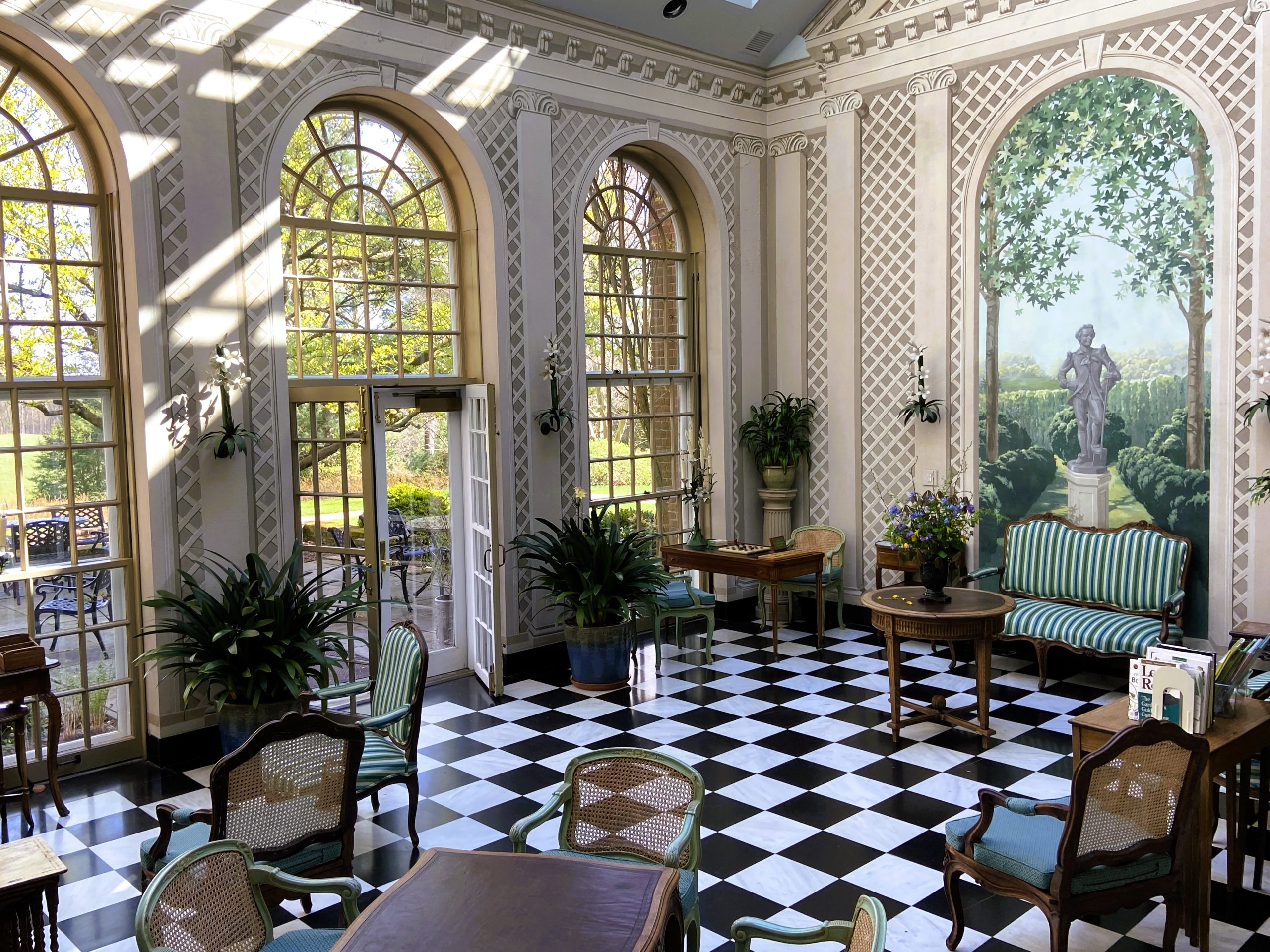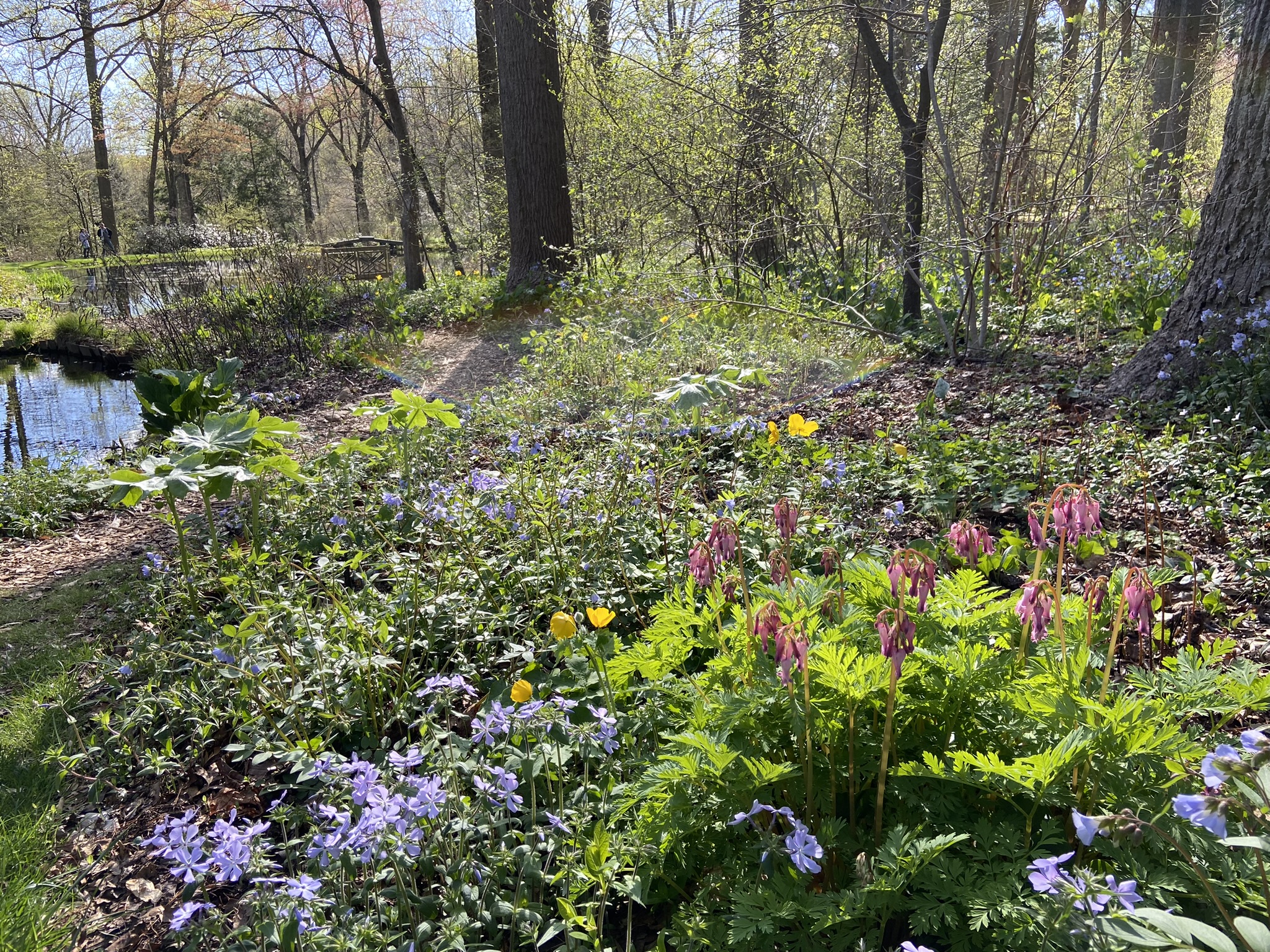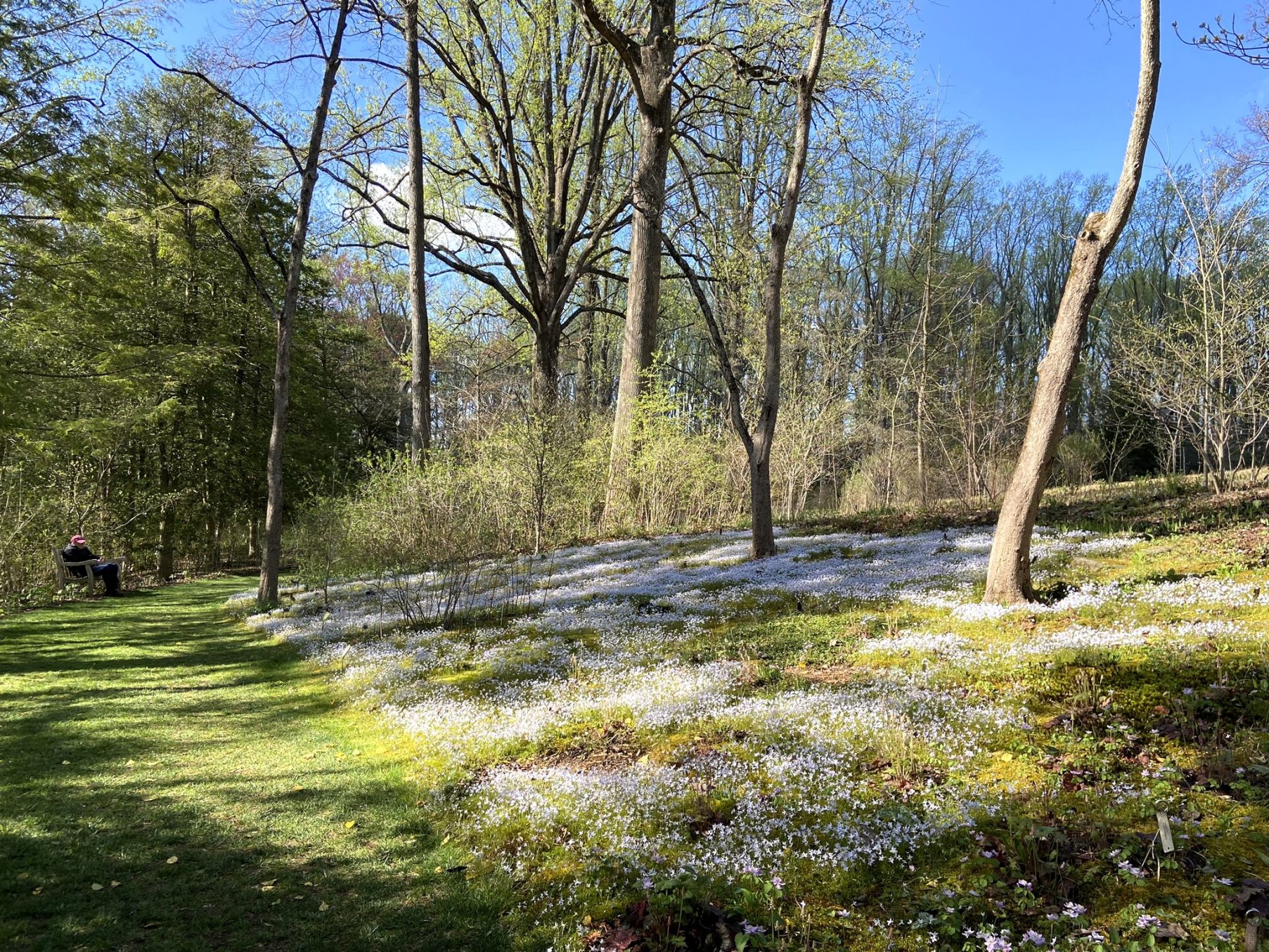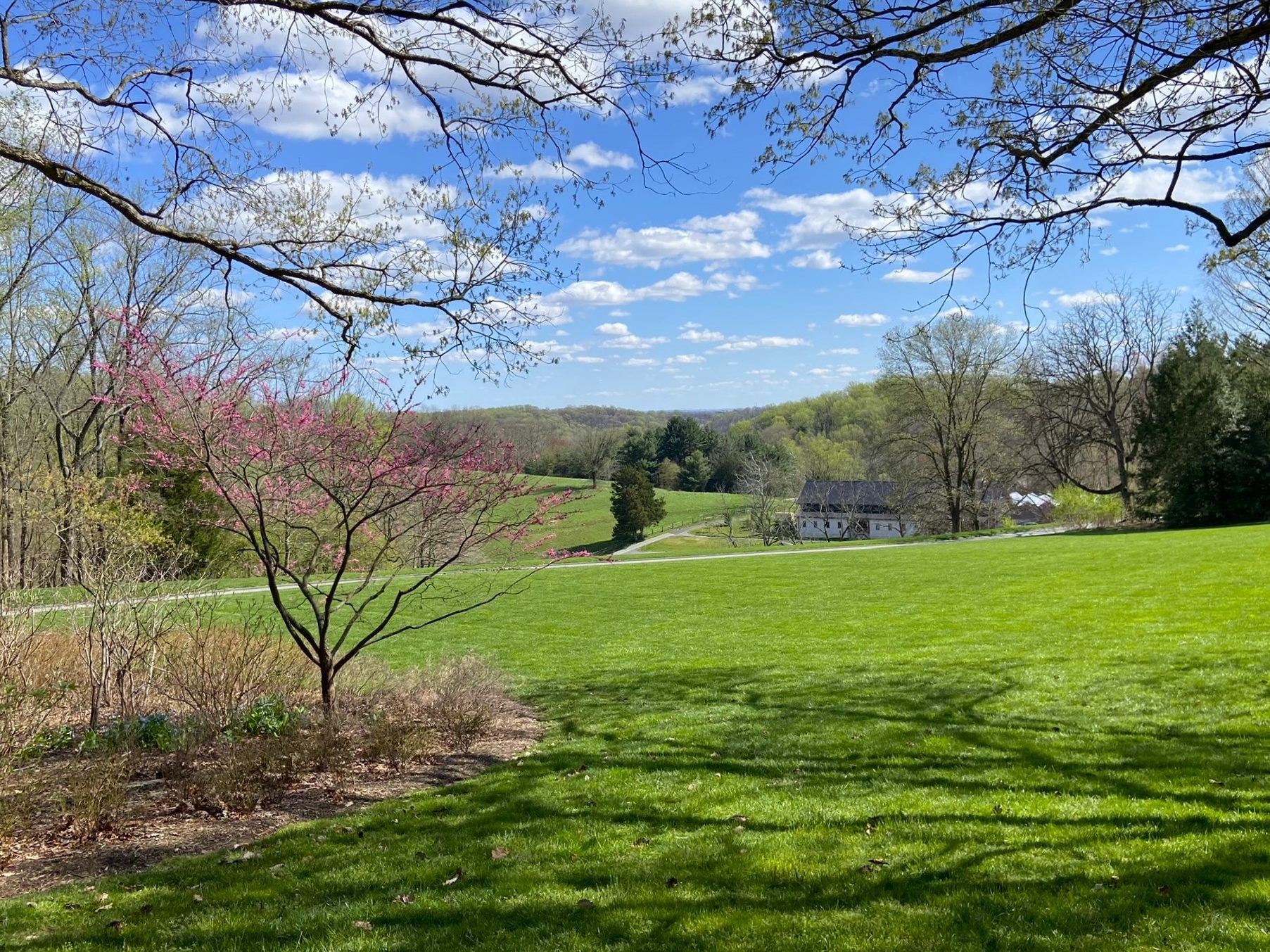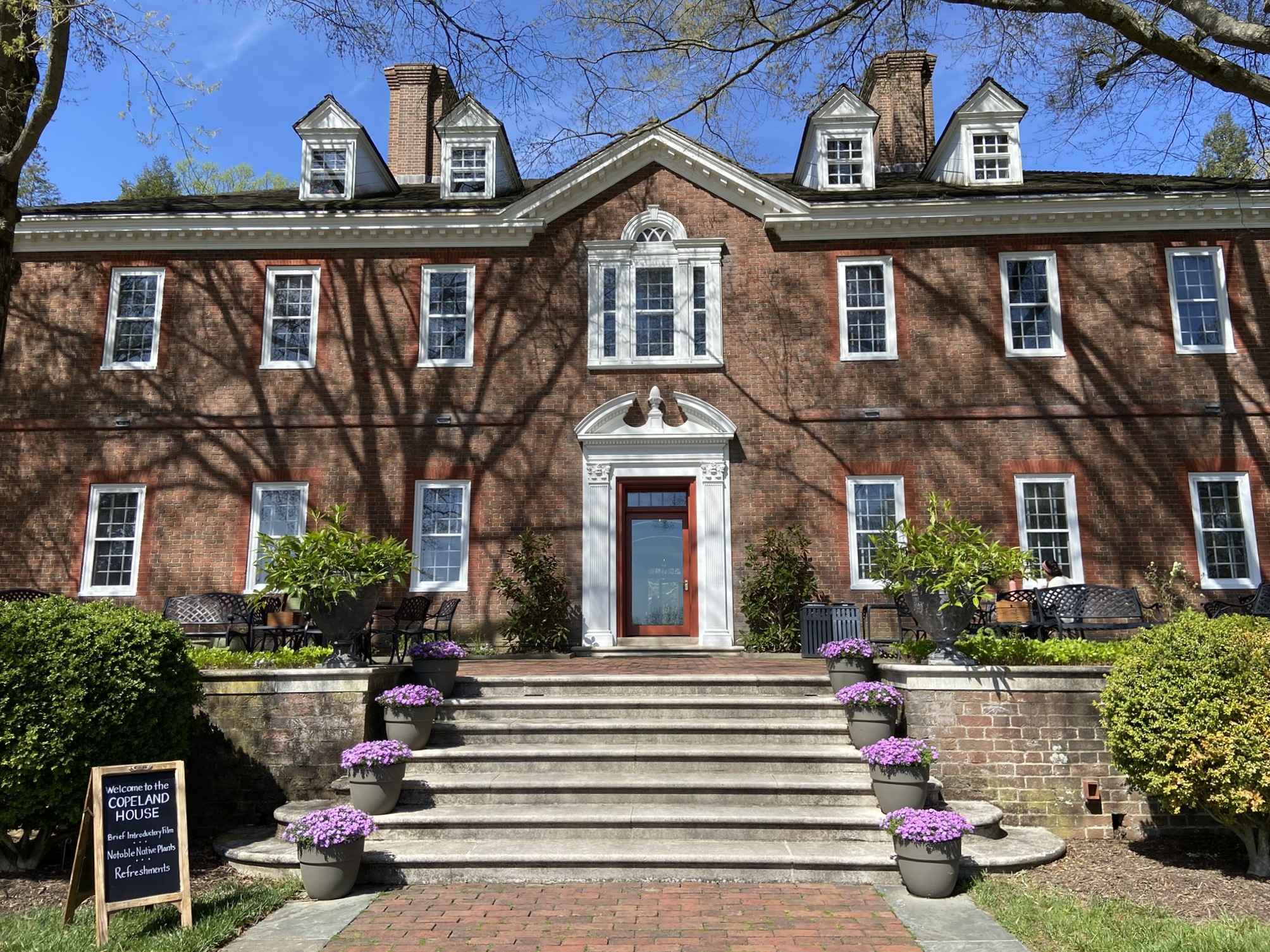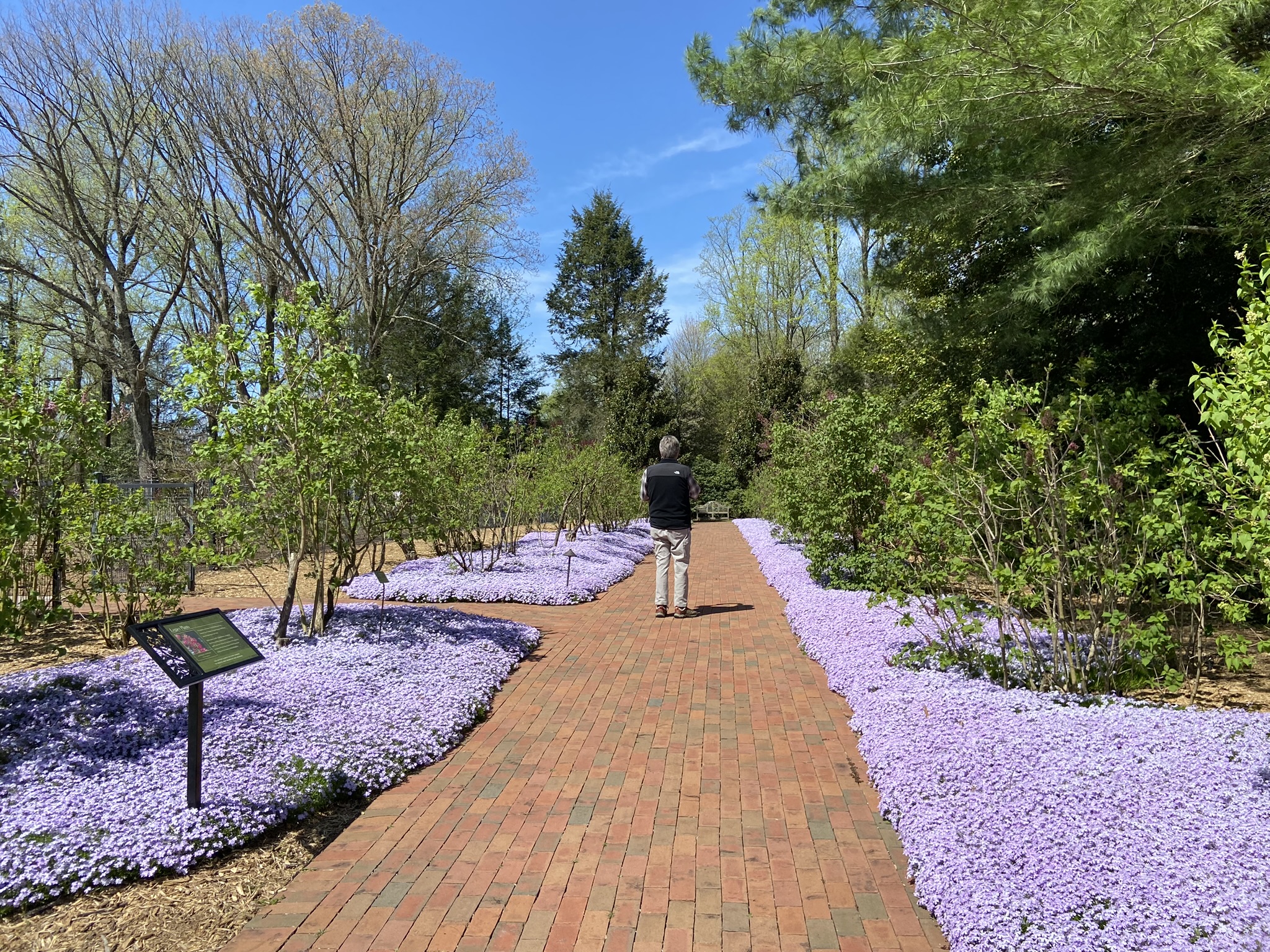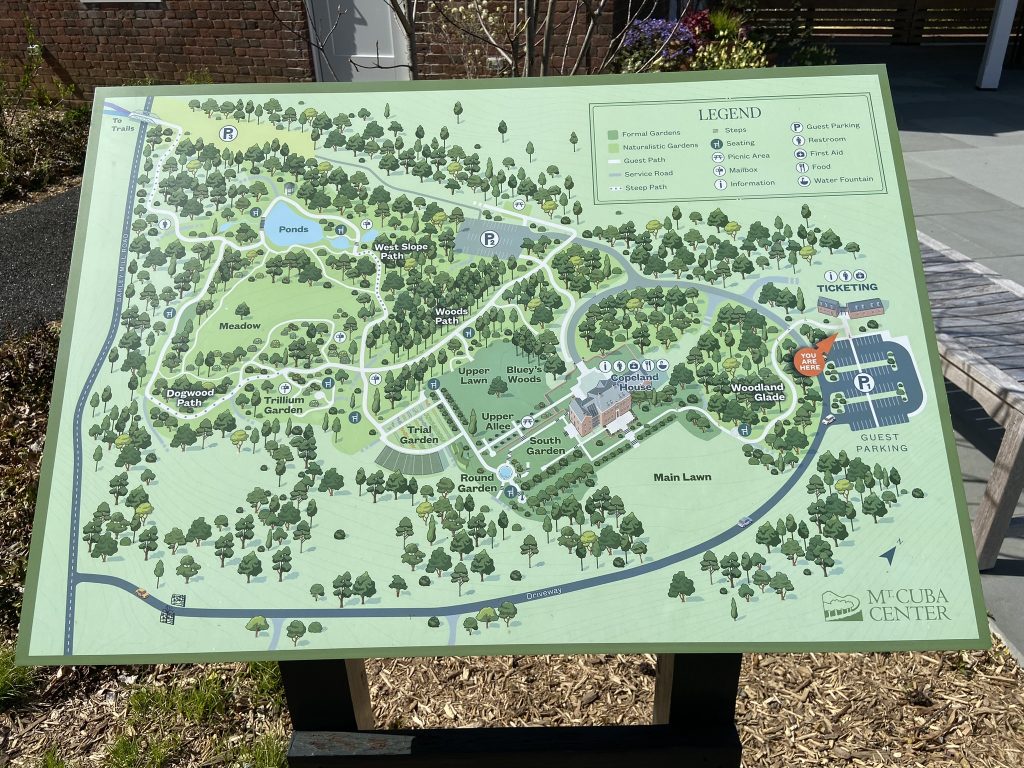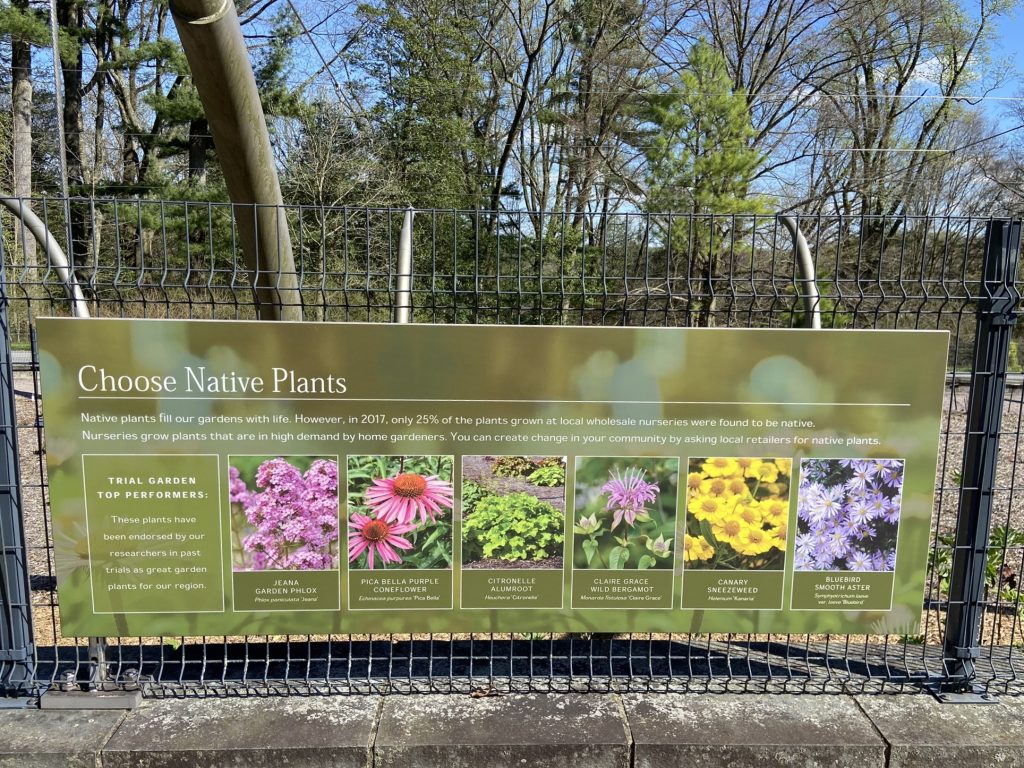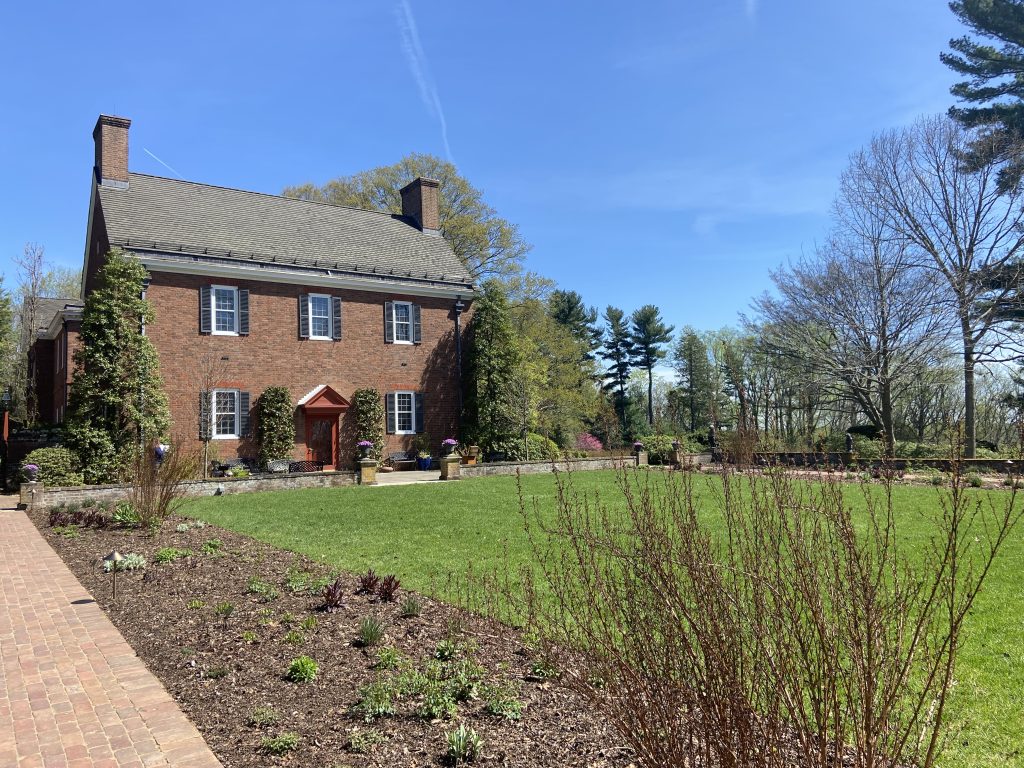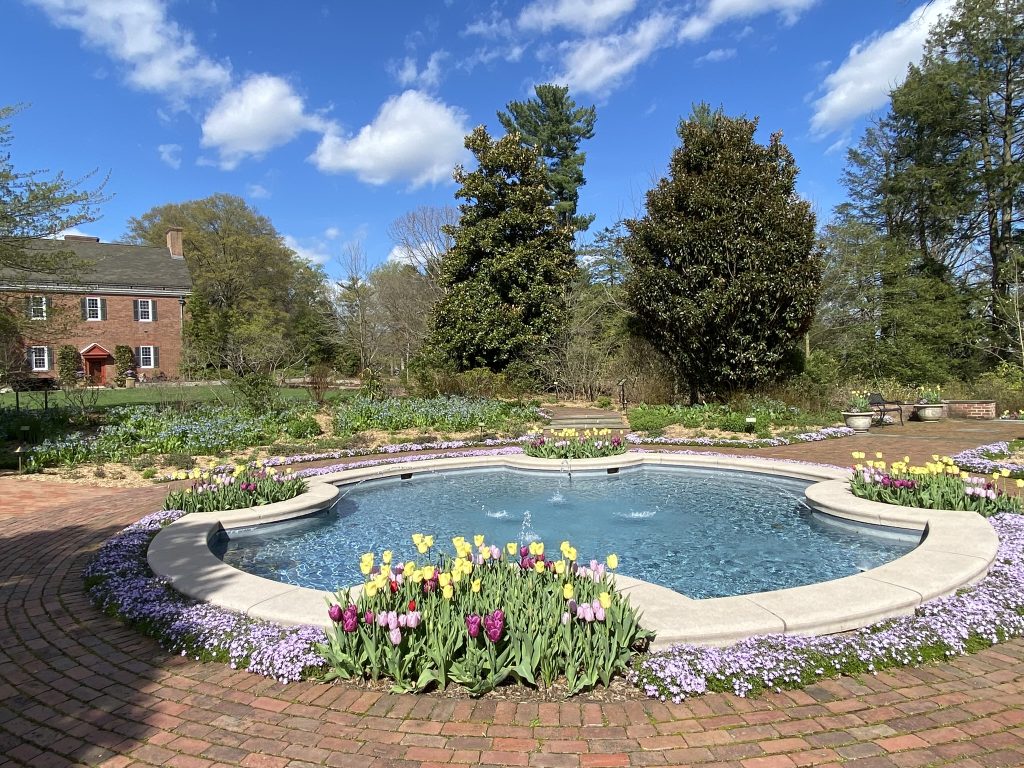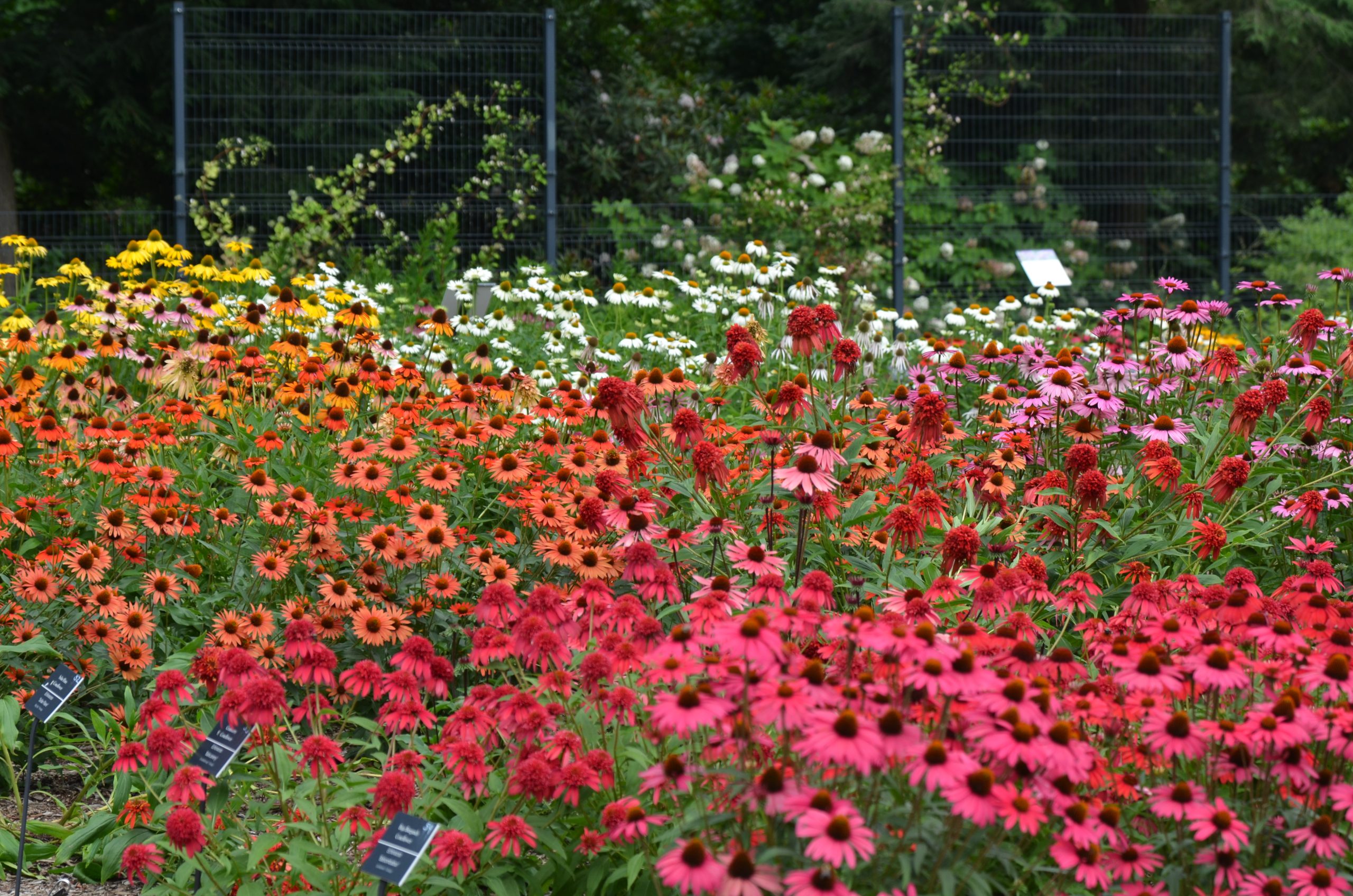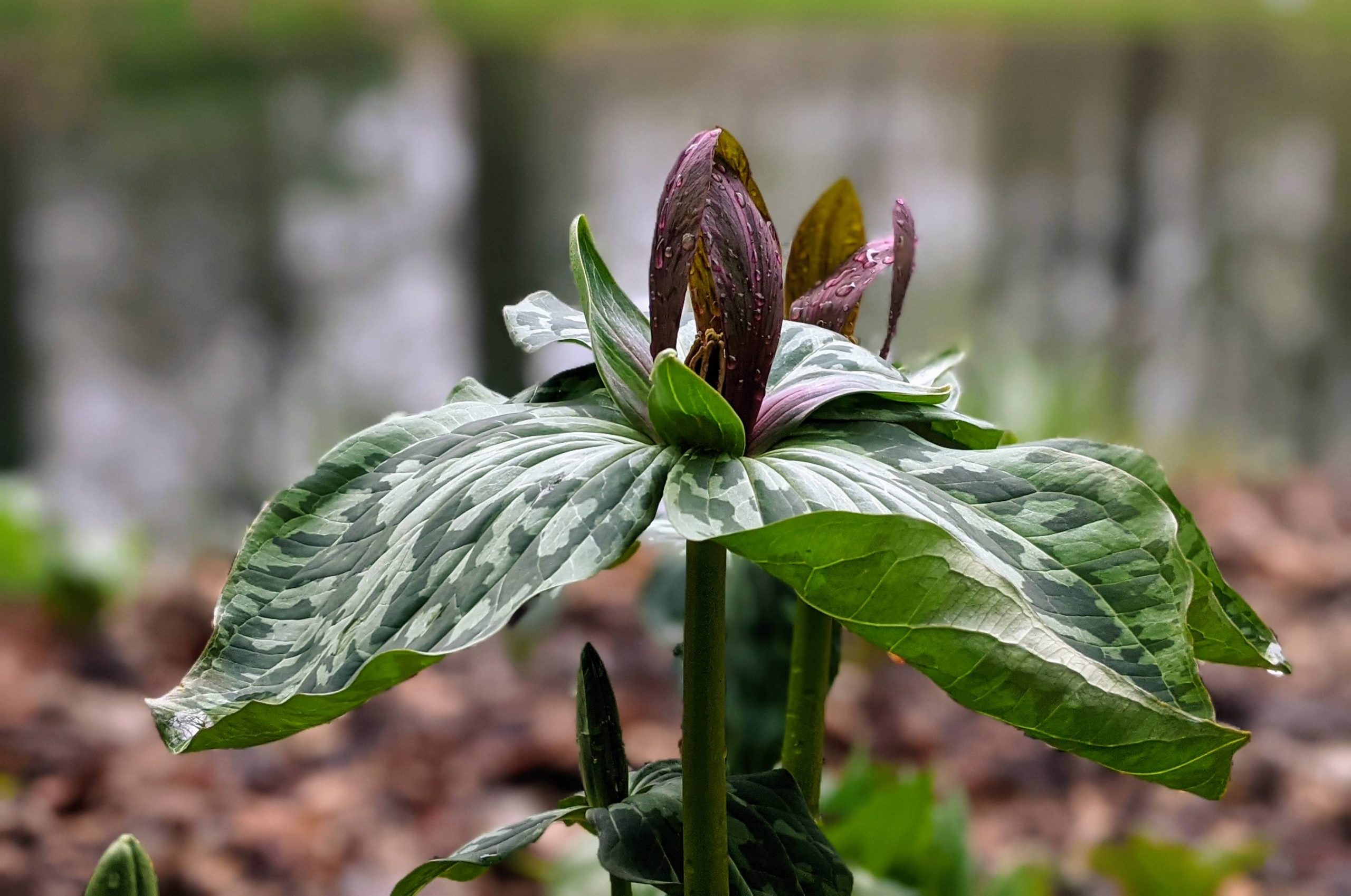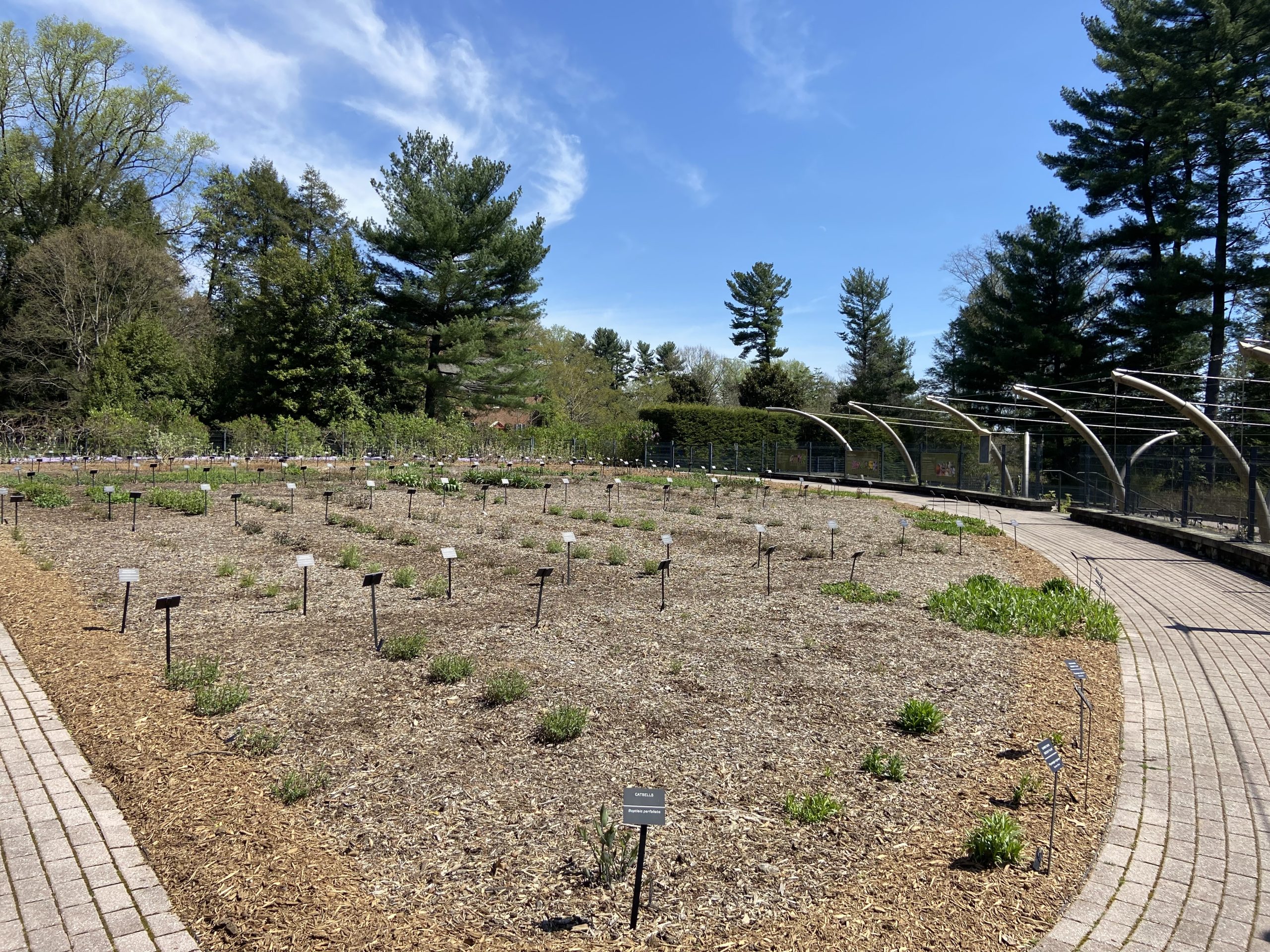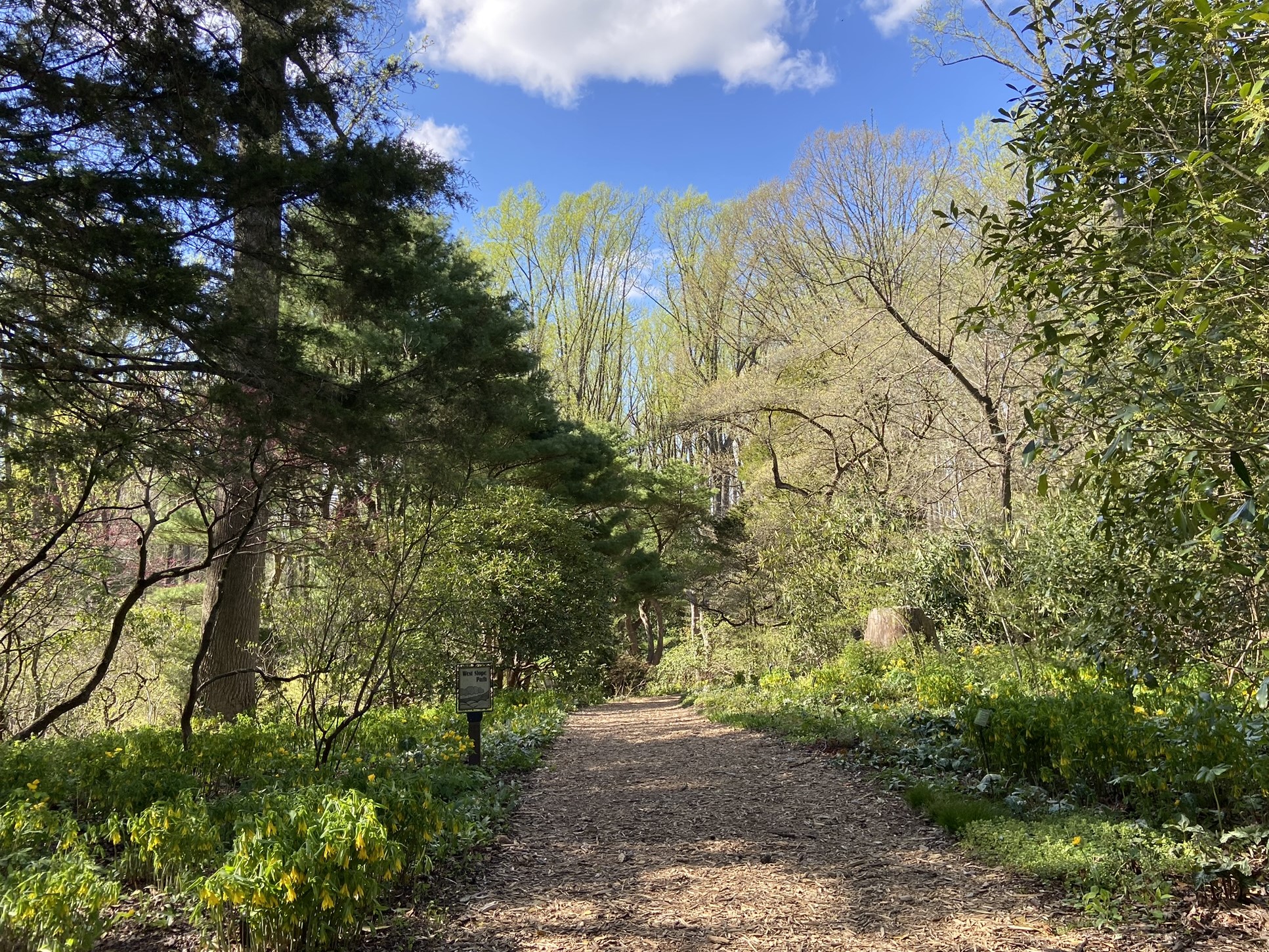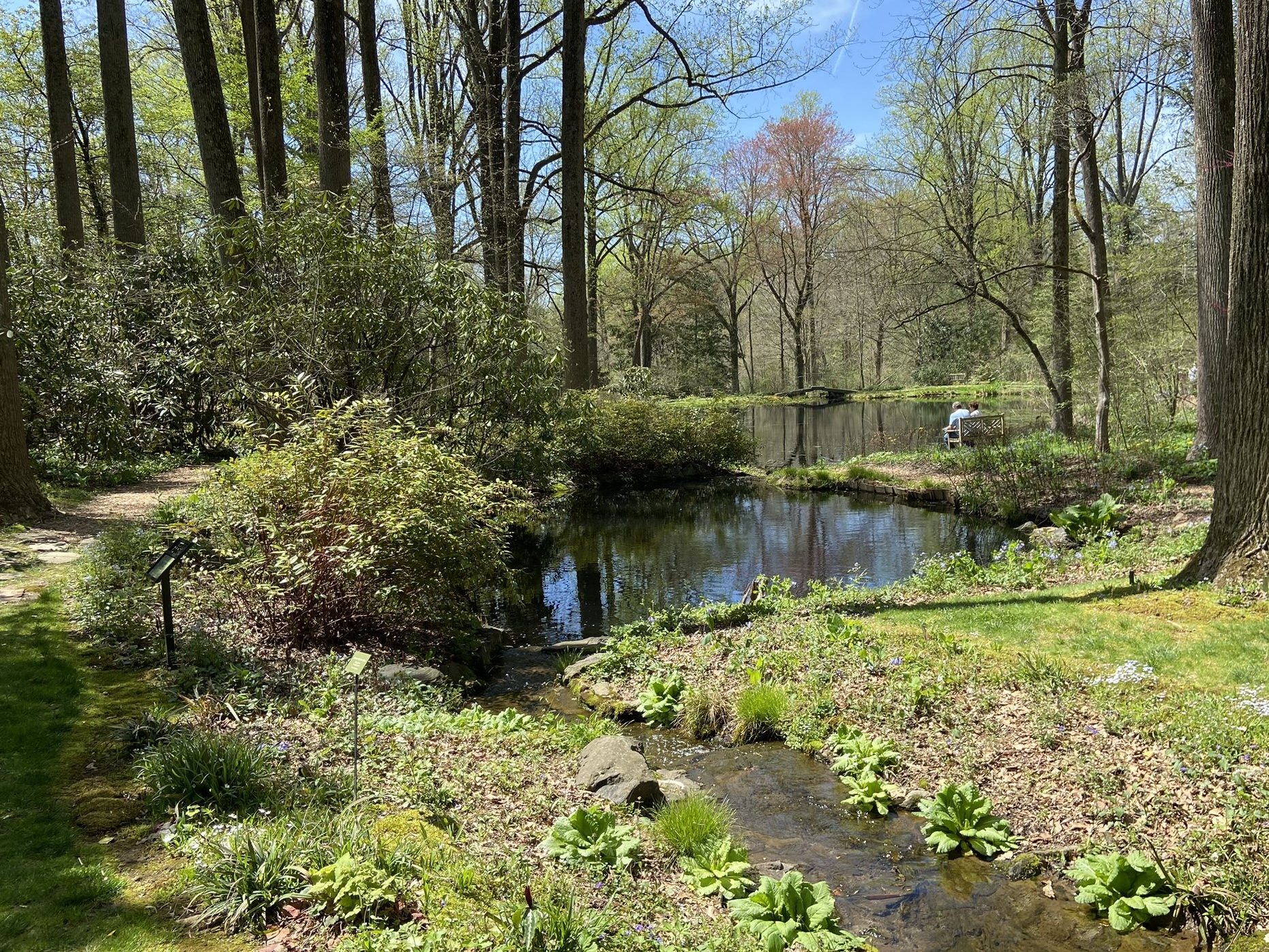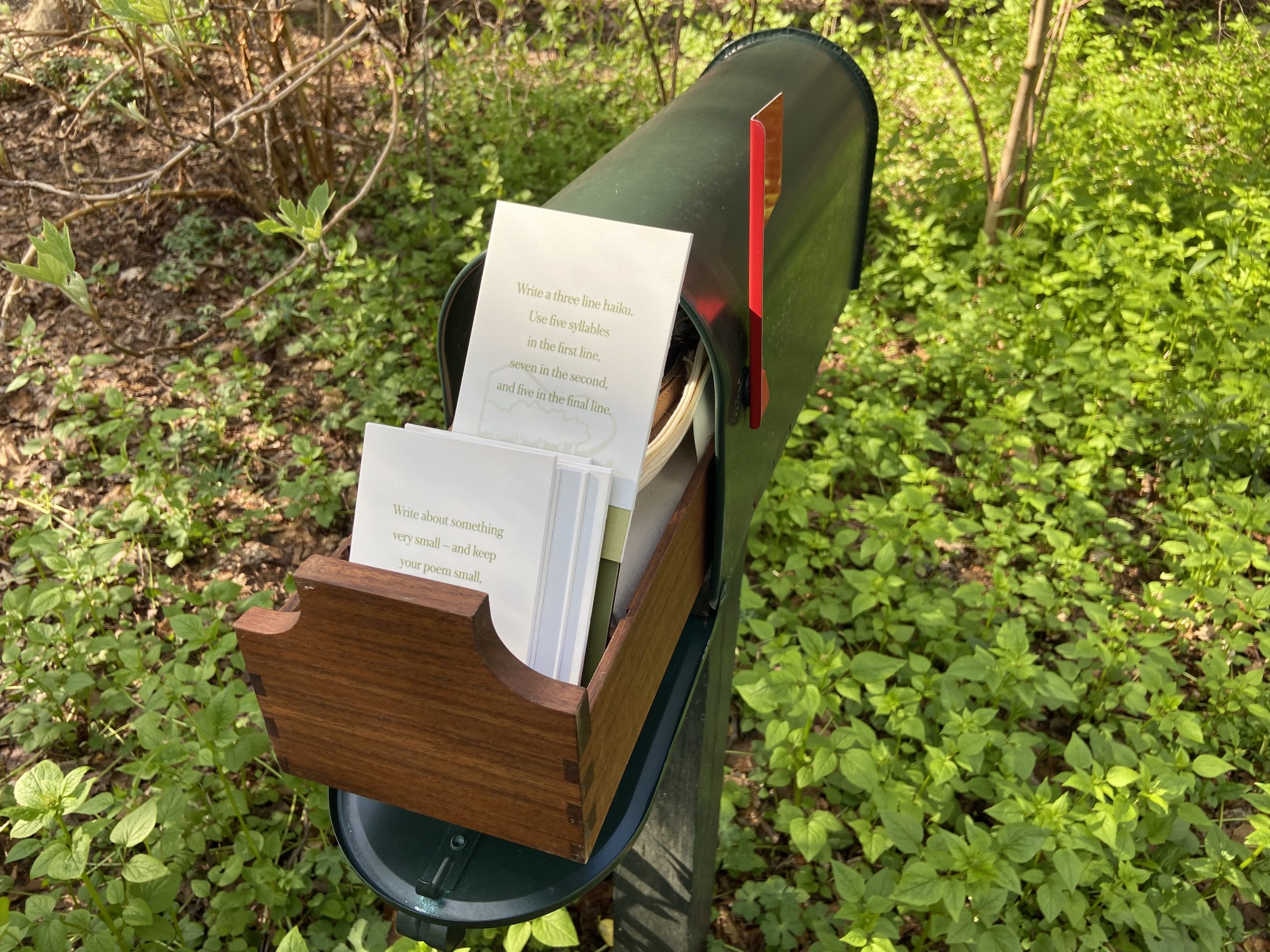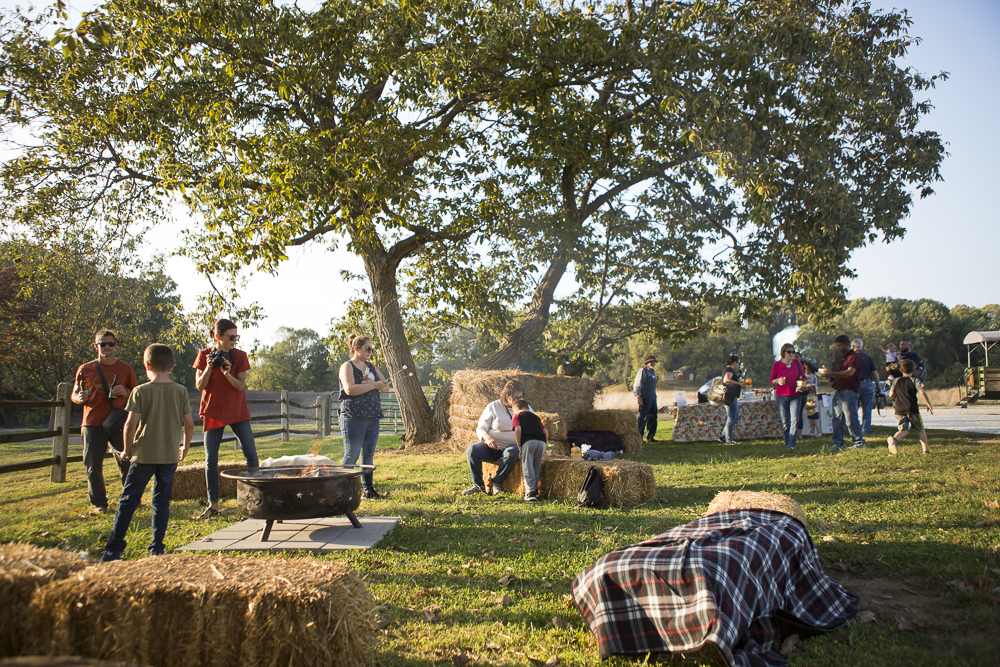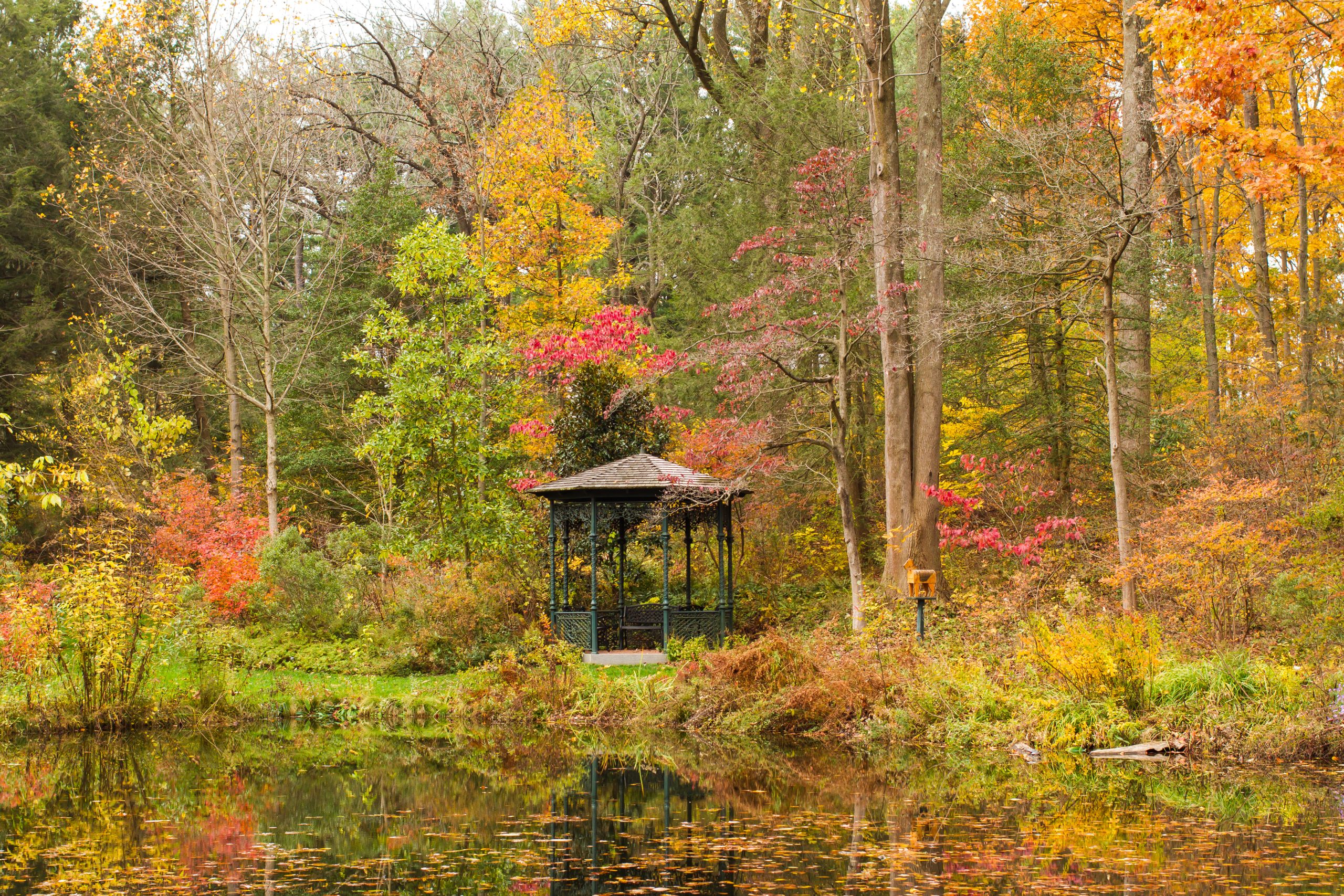One of the Brandywine Valley’s lesser-known treasures, Mt. Cuba Center is a captivating botanical garden with a special mission: conserving native plants and encouraging people to add them to their gardens. Native plants—those that occur naturally in a habitat without human introduction—support pollinators and biodiversity, and their use has surged in the past 20 years due to concerns about the environment.
In the United States, a recent National Gardening Survey found that one third of all adults wanted to buy plants that support local wildlife. Pamela and Lammot du Pont Copeland, whose estate became the Mt. Cuba Center in Hockessin, Delaware, were decades ahead of this trend, beginning in the 1940s with a wildflower garden. Today the garden’s more than 1,000 acres encompass formal gardens using native plants, a trial garden for Mt. Cuba’s extensive research, naturalistic woodlands, and wilder areas. From delicate spring blooms to fall’s brilliant colors, the gardens change constantly, offering beauty as well as inspiration.
In 1935, Pamela Cunningham Copeland (1906–2001) and Lammot du Pont Copeland (1905–1983) purchased 126.7 acres of farmland near Wilmington, building a Colonial Revival–style house and adding a variety of gardens. He was president of DuPont from 1962 to 1967; she became a horticulturalist and historic preservationist (from 1951 to 1960, she served as First Regent of George Mason’s home, Gunston Hall, which Side of Culture has covered). Mt. Cuba Center incorporated as a nonprofit foundation in 1989 to preserve the gardens for future research and enjoyment; in 2002, it began transitioning to a public garden, opening in 2013.
In 2018, Mt. Cuba Center and Red Clay Reservation, a nature preserve, merged, creating a site with 68 acres of gardens and 1,000 acres of natural lands. About 25,000 people visit annually, a number that has increased steadily. Melissa Starkey, PhD, Marketing and Communications Manager at Mt. Cuba, says that “We want people to leave here inspired to be good stewards of the environment and see how beautiful native plants are and how important they are for our ecosystem. Whether someone plants a few native plants in a container on their city front steps or garden beds full of native plants in a large yard, every little bit makes a difference.”
Exploring the Gardens and Trails
Close to other outstanding gardens and sights in the Brandywine Valley area of northern Delaware and southeastern Pennsylvania, Mt. Cuba is a one-hour drive from Philadelphia. It’s less than 8 miles northwest of Wilmington, 8 miles south of Longwood Gardens and 6 miles west of Winterthur.
Open April through November, the gardens have helpful plant labels and colorful information boards about different landscapes, specific native plants, and how individuals can improve the environment (“Plant the Change,” one sign says). Activity boxes around the grounds help children and adults engage with the gardens by writing, sketching, or examining a topic deeper. Visitors can explore on their own, but a one-hour Welcome Walk with a garden educator offers a wonderful introduction to Mt. Cuba’s history, the gardens, and native plants, as well as ecological gardening tips. Other tours dig deeper into gardening; one new tour focuses on health and well-being in nature. Visitors can also preview the gardens via the website’s virtual tour.
Copeland House, the Copelands’ former home and now a visitor center, shows a short introductory film and sells snacks. Formal gardens and terraces surrounding the house use symmetrical and geometrical elements, displaying native plants and some legacy non-native plants from the Copeland era (such as boxwood and the Round Garden’s spring tulips). Noted landscape architect Marian Coffin redesigned the 18th-century-style South Garden, with its brick paths and walls, in 1949. Since 2015, this garden has been planted with native perennials that demonstrate how such plants—sometimes considered weed-like or less attractive—can work in more formal displays. A 2023 renovation of the South Garden kept Coffin’s design but created an ADA accessible path, achieving Mt. Cuba’s goal of providing an accessible route from the parking lot through the formal gardens, Trial Garden, and Woods Path.
The 15,000-square foot Trial Garden is essential to Mt. Cuba’s work as a leader in native plant research and education. Researchers assess native species and related cultivars for their ecological benefits and usefulness in gardens in the mid-Atlantic region. Visitors can see multiyear trials in progress, and research reports are available for nurseries and the public. Some previous trials have examined phlox, Echinacea (coneflowers), Coreopsis, wild hydrangea, and Amsonia (bluestars). In 2024, Mt. Cuba and Cavano’s Perennials, a mid-Atlantic perennial wholesaler, launched a collaboration that includes labeling native plants that scored high in Mt. Cuba’s trials with a Top Performer tag.
In the 1960s, landscape architect Seth Kelsey helped the Copelands develop extensive naturalistic gardens, adding ponds and winding paths, to highlight native plants of the mid-Atlantic. Carefully planted and monitored, these areas promote healthy ecosystems, improving air quality and providing habitats for wildlife from toads to birds. The West Slope Path leads to the popular Ponds area, with its four ponds. In spring, sunlight shines on the water and plants; in summer, the surrounding trees provide a lush green canopy. Also part of the naturalistic gardens, the Trillium Garden is a spring highlight, showcasing Mt. Cuba’s nationally recognized collection of these delicate, early blooming wildflowers, recognizable by their three leaf-like bracts and a single flower with three petals and sepals. A sizable moss bank along the Dogwood Path shows that even humble mosses can glow with beauty.
Visitors can walk over a pedestrian bridge to access about 2.5 miles of trails through different habitats, such as a Grassland Trail and an Understory Trail. Offering some lovely views, these areas are managed to preserve the regional landscape, which has been threatened by development.
Beyond the Gardens: Programs and Conservation
From special events to wide-ranging educational offerings, Mt. Cuba Center provides ways to connect with nature. Favorite events include April’s Wildflower Weekend, three days of activities and music for adults and kids, and summer’s Twight on the Terrace concerts. In fall, hayrides, Hay Bales and Brews (for adults), and Sunsets and S’mores (for families) are popular.
The heart of Mt. Cuba’s educational efforts, the Ecological Gardening Certificate program was established in 2014 for home gardeners and landscape professionals who want to garden sustainably. This program requires 158 course hours for certification and is mostly on-site. Besides the certificate courses, which can also be taken without credit, Mt. Cuba offers dozens of classes on gardening with native plants, conservation, food and drink, art and nature, and wellness; there are programs for young people, too.
Research and conservation, including land management and open space preservation, are central to Mt. Cuba’s mission. The Research section of the website provides lists recommended native plants and nurseries. As part of managing more than 1,000 acres of natural lands, Mt. Cuba facilitates research such as studies of eastern bluebirds and kestrels and a 100-year reforestation experiment.
Mt. Cuba’s financial resources enable it to extend its conservation interests beyond the garden’s boundaries. Working with partners, it has provided funds to preserve more than 15,000 acres in the mid-Atlantic, from the Brandywine Valley to the Chesapeake Bay. Mt. Cuba Center recently collaborated with the Longwood Foundation to help acquire Granogue, a 505-acre former du Pont estate that is one of the Brandywine Valley’s last unprotected open spaces. The sale was completed in January 2024; Longwood Gardens will own and operate Granogue. In 2012, Mt. Cuba’s $20 million grant to the Conservation Fund helped fund the purchase of 1,100 acres in northern Delaware and southeastern Pennsylvania. The land, transferred to the federal government, became part of First State National Historical Park, Delaware’s first national park. It’s another of many examples of Mt. Cuba’s commitment to local conservation.
Side Dish
Mt. Cuba is a wonderful place to bring a picnic lunch and relax at tables on the terraces, in a shaded picnic area, or on the grounds. In the spirit of conservation, guests are encouraged to bring a reusable water bottle.
Linda Cabasin is a travel editor and writer who covered the globe at Fodor’s before taking up the freelance life. Despite previous visits to the area, this was her first trip to Mt. Cuba Center, and she looks forward to many more. She’s a contributing editor at Fathom. Follow Linda on Instagram at @lcabasin.


